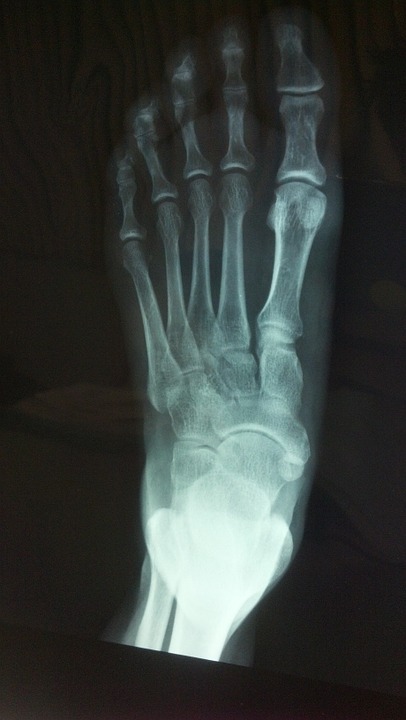
Bone spurs, which are also known as osteophytes, are bumps that grow along the edge of your bone, often near the joints. These typically occur on your heels, knees, shoulders, neck, and hips. In some cases, it can develop in the spine, which is severely uncomfortable.
Most people don’t feel any discomfort in the early stages of a bone spur. The pain or stiffness comes when these bumps grow to a significant size that it pinches your nerves or hits other parts of the body.
While health and fitness innovations are being developed regularly, don’t wait until you have to go through surgery or have orthopedic tools attached to your body before you address the problem.
Check out these treatment options for bone spurs:
1. Weight Loss
One of the primary reasons why people develop bone spurs, especially on their heels, is that they’ve become too heavy for their body to support them. In these cases, the ideal bone spur treatment is to come up with a weight loss plan to alleviate the pressure on their feet.
Some tips to lose weight safely:
- Do Low-Impact Exercises – Avoid running and other strenuous physical activities since you may exacerbate the bone spur on your foot and cause more pain to yourself. Stick to low-impact exercises, such as brisk walking or using a stationary bike.
- Limit Your Calories – While dieting entails restricting your caloric intake, it doesn’t mean forgoing eating altogether. Instead, be mindful of the things that you’re putting inside your body. Take advantage of calorie-tracking apps to help you monitor how much you’re consuming each day.
- Eat a Balanced Meal – Turn away from sugar and junk food. Include veggies, lean meat for protein, plant-based milk, and more fiber in your diet. Look for recipes online that you can cook to ensure that you have a balanced diet regularly.
2. Appropriate Footwear
Tight or loose-fitting shoes can increase the risk of developing bone spurs. If this is the reason for your injury, it may be time to invest in appropriately-sized footwear.
Aside from the fit, these are the factors you should consider for your spur-relieving shoes:
- Support – Find the right type of support for your bone spur. If the bump is located on your heel, look for footwear that provides extra backing on that area. On the other hand, if your spur developed on the arch, you should invest in shoes with padded insoles.
- Cushion – Cushioning helps in alleviating the pressure that your body weight puts on your feet. Look for kicks made from durable material. Memory foams are ideal since these mold into the shape of your feet. Just make sure to find one that provides the right support without sacrificing the softness of the pads.
- Comfort – No matter how appropriate the size of your footwear is, nothing beats testing them out and ensuring that they suit your needs perfectly. Round or square-toed shoes are ideal for giving your toes extra wiggle room.
3. Oral Medication
This treatment option for bone spurs doesn’t address the injury directly. Instead, oral medication is used to alleviate the pain and discomfort associated with severe cases of osteophytes.
Your doctor may prescribe anti-inflammatory drugs to reduce the swelling of the bump. You can also get over-the-counter medicine for it, but it’s better to check with your physician on the best way to go about this health issue.
These healthcare professionals have the proper equipment to pinpoint the precise problem area. They use specialized technology like X-rays, ultrasound, CT scans, and MRIs to gain more insight into your bone spurs. The information that they get from your initial check-up can help them make better decisions on your treatment.
4. Physical Therapy
You may also be required to go through physical therapy. Similar to oral medication, this technique is used to alleviate the symptoms of bone spurs, not the bump itself.
A physical therapist can aid you as you regain the motion of a joint that’s affected by the bone spur through stretching exercises and massages. Your regimen may also include activities to strengthen the muscles around the bump.
5. Surgery
Severe bone spurs may require surgery, especially if the symptoms have become debilitating. The goal is to remove the bumps and assuage the pressure that it brought on muscles, tissues, and nerves. With this, the joints can go back to its normal functioning without hindrance on your movements caused by inflammation of the osteophyte.
Conclusion
Bone spurs are abnormal bumps that develop along the edge of your bones or joints. One primary treatment option for this injury is weight loss to reduce the pressure on your heels or lower back.
You can also take advantage of technological tools like calorie-counting apps, online videos, and other healthcare innovations to prevent and address bone spurs.
Other ways to alleviate the symptoms is by investing in the right footwear, taking oral medication for the pain, and going to physical therapy to regain movement of your joints. For severe cases, surgery is required to remove the bump.
Neil Joines
Neil Joines is a podiatrist by profession who works by diagnosing and treating health problems that affect the foot, ankle, and lower extremities. Neil also provides therapeutic treatments for arthritis, calluses, feet corn, and fractures.
Neil likes to spend his leisure time by reading books and contributing articles online.